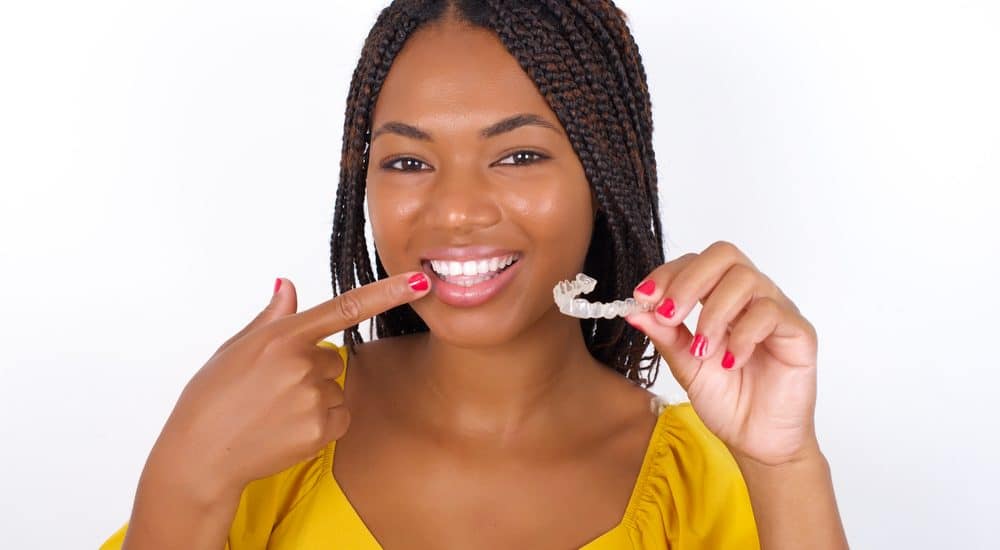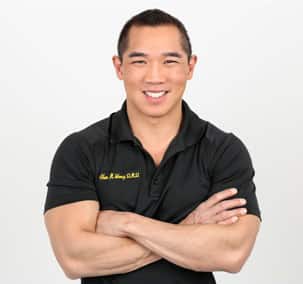How Do I Handle Eating and Drinking With Clear Aligners?
- November 15, 2022
- Posted by: Dr. Alan Wong
- Category: Modern Aligners

Clear aligners are a fantastic option when it comes to orthodontic treatment. For teens and adults who may not want the visibility of standard braces, clear aligners allow for intensive orthodontic treatment with minimal visibility. However, just like with standard braces, you’ll need to follow some rules when it comes to eating and drinking.
Compared to standard braces, clear aligners are certainly less limiting when it comes to what you can eat and drink. However, your clear aligner provider will still recommend that you keep an eye on your eating and drinking habits and make a few slight changes.
Remove Aligners Before Eating
Even though the aligners are smooth and perfectly cover your teeth, you should never eat with them on. The pressure on your teeth while you eat is much more than what clear aligners can handle. To prevent your aligners from breaking, wearing down, or cracking, always remove your aligners before a meal.
Similarly, it’s essential to keep in mind how long you spend at each meal. When you eat, you’ll need to remove your aligners, but your aligners need to be worn at least 20 hours a day to help you achieve your orthodontic goals. When you’re not actively eating, put your aligners back in so that you don’t go too long without wearing them.
Only Water
Yes, you can still drink coffee and juice, but not when your aligners are in. When you’re wearing your aligners, stick to water. Anything else can lead to discoloration of the aligners or trap sugar and other particles between the plastic and your teeth. This can cause other dental issues that may complicate your orthodontic treatment.
Even though you can remove your aligners to drink other beverages, keep in mind how long your aligners are off. If you have coffee with a friend and slowly sip your drink for an hour and a half, it’s easy to forget that your aligners should be worn for at least 20 hours every day. Between meals, coffee breaks, and other snacks, you can quickly forget to keep your aligners in for the required amount of time.
No Gum
Many people enjoy chewing gum. However, with clear aligners, you cannot chew gum. Just like with eating, the pressure of chewing gum with your aligners can cause them to break. Unlike with eating, though, you shouldn’t take out your aligners just to chew gum.
It may be difficult if you always chew gum, but when you’re undergoing orthodontic treatment, you will not be able to chew gum, whether you have clear aligners or standard braces.
Brush Your Teeth Often
Ideally, you should brush your teeth every time before you put your aligners back in, but we understand that you may not be able to do this for every meal. Whenever you eat or drink at home, make sure to quickly brush your teeth before putting your aligners back in place.
If you’re at work or school, try carrying a spare toothbrush in your bag. You don’t even need to use toothpaste or brush for the whole two minutes. Just give your teeth a quick brush and rinse so that any food particles are removed before they can be trapped with your aligners.
Avoid Frequent Removal
Yes, you do need to remove your aligners before every meal or beverage that isn’t water, but you shouldn’t remove your aligners too frequently. This means that you should avoid snacking and sipping tea or coffee throughout the day. Frequently snapping your aligners in and out of place can push your teeth or wear down the aligners, so only remove them when necessary and never be tempted to eat or drink something with them “just once”.
Conclusion
Clear aligners are a great orthodontic treatment method, but there is a level of discipline that comes with wearing them. If you want your treatment plan to be effective, follow all your orthodontist’s instructions and the directions above!

Dr. Alan Wong is a dedicated orthodontist who loves helping his patients achieve healthy, beautiful smiles. He is committed to providing gentle, effective care in a patient-centered environment. Dr. Wong is also a strong believer in continuing education, so he can provide his patients with the latest and greatest treatment options.
